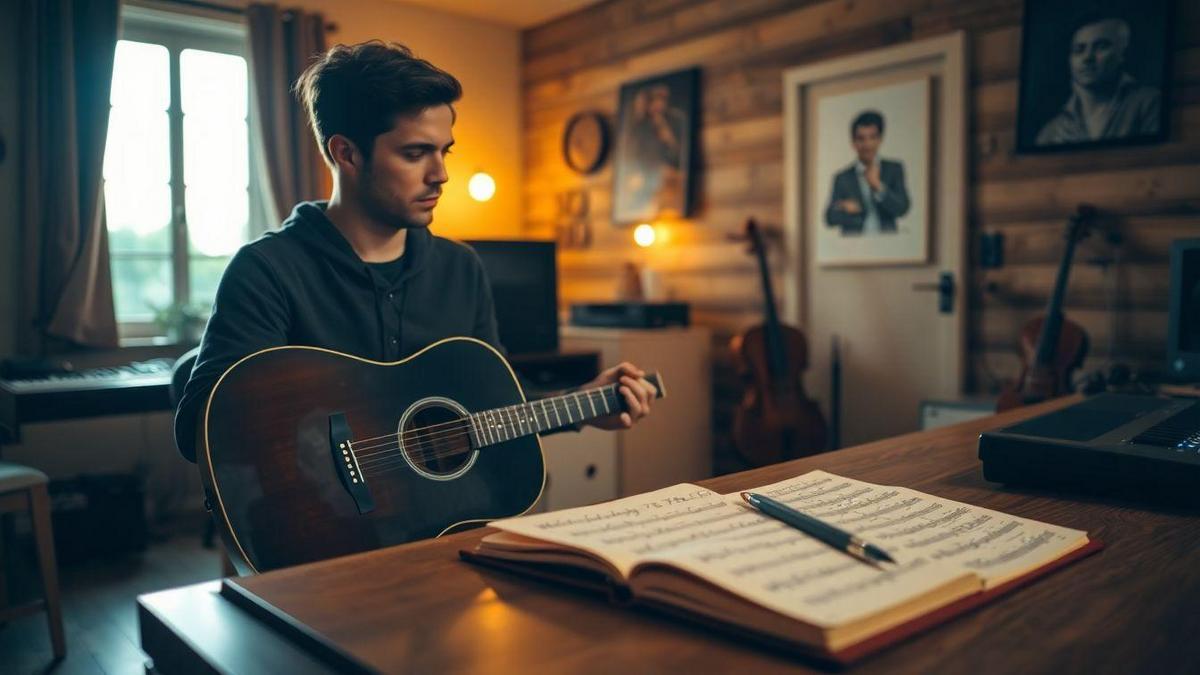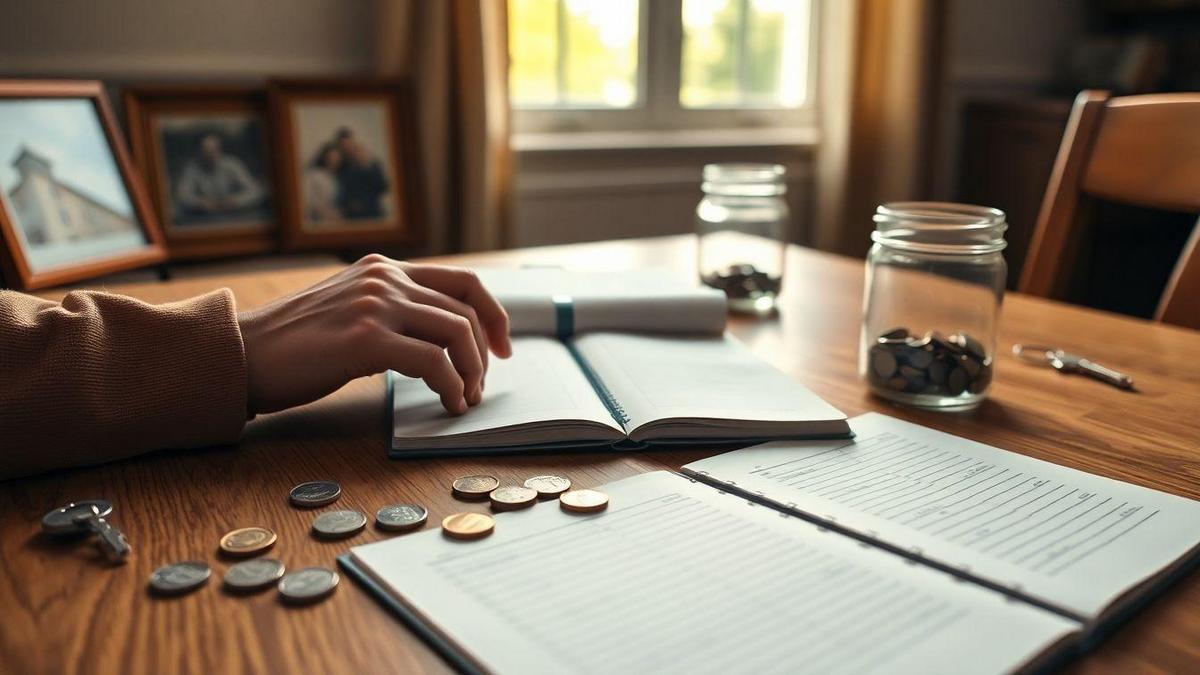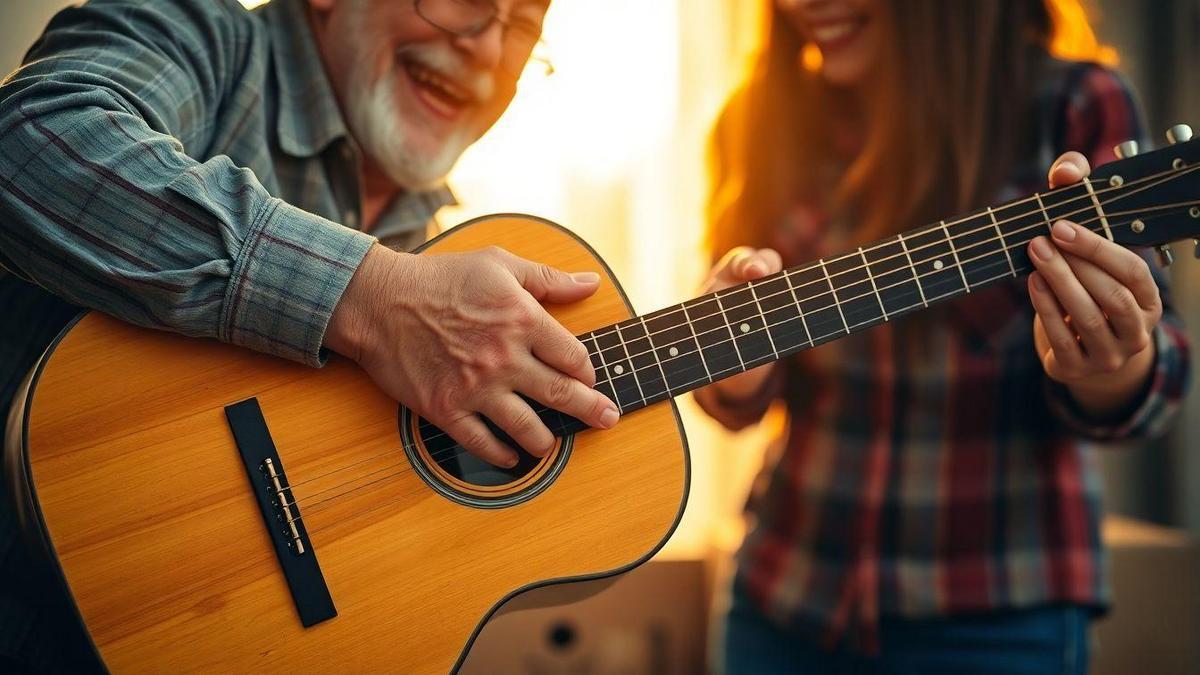Why personal connection matters more than price

I use “Why personal connection matters more than price” as my lens when choosing instruments. Price is a number; connection is the spark that makes me practice. If an instrument doesn’t feel right, it stays in its case. Feel, tone, and playability drive progress more than the lowest sticker price. For people just starting out, see my guide on how to choose your first instrument without regrets for extra context.
Key takeaway
- Build trust, not just cut price.
- Listen first and show care.
- Explain how your offer helps the buyer.
- Stay in touch after the sale and act on feedback.
Why personal connection matters more than price when I pick an instrument
I listen to my gut before my wallet. The instrument I love gets played; the cheap one I tolerate gathers dust. Choosing a companion I enjoy playing is an investment in progress—so I prioritize connection over a bargain. Emotional ties also deepen with time; read about the link between music and personal memories to see how instruments become part of your story.

How my emotional connection helps me practice more
When an instrument feels right, practice becomes natural.
- Comfort: the neck, keys, or weight encourage me to sit down.
- Pride: I enjoy showing off an instrument I like.
- Curiosity: a compelling sound keeps practice fresh.
- Routine: five minutes turns into thirty when I care.
I learned this by buying a cheap keyboard that sounded bland (used rarely) and a used synth with warmth (played daily). Emotion drives habit — and playing can be surprisingly restorative; see how music-as-therapy clears the mind and boosts motivation. Berklee offers research-informed tips for building an effective practice routine. For practical ways to keep practice fun, check out making practice fun instead of a chore.
How feel and tone beat a lower sticker price
Price can be misleading. A cheap tag doesn’t guarantee joy—feel and tone do. In stores I test:
- Feel: how it sits and responds.
- Tone: color, sustain, and character.
- Playability: ease of bends, chords, articulation.
- Reaction: reward for light touch and small moves.
I choose the instrument that feels like an extension of my body. Even if it costs a bit more, I play it more and learn faster—real value over the long run. Remember there’s no one perfect choice for everyone; there’s no such thing as the perfect instrument, only the right fit for you.
Quick checklist to compare feel, sound, and cost
- Play a familiar phrase.
- Play 5–10 minutes: hand tired or happy?
- Test dynamics: soft, medium, loud.
- Check tuning and action stability.
- Ask about setup and repairs (see what to check before buying a second‑hand instrument).
- Compare price vs. expected weekly playtime.
- Trust your gut: if it makes you grin, that matters.
Match instrument to musical style (not just price)
Why personal connection matters more than price when choosing style: the right sound, technique, and comfort let you play the music you love. If you’re undecided on an instrument family, this post on guitar, keyboard, or drums — which one fits your style? helps you narrow choices by genre and role. For a general reference, see the overview of musical instrument types and roles.
How I identify genres and needs:
- List artists/songs you love (real targets).
- Note the instrument’s role: lead, rhythm, texture.
- Listen for tone (bright, warm, punchy) and technique (fingerpicking, bending, long notes).
- Watch live clips to see posture and movement.
- Test in a gig, jam, or lesson early—real life shows what fits (and the joy of playing with other people often clarifies what truly belongs in your hands).
Test instruments for the techniques you need
- Name techniques first (strumming, bow control, runs).
- Bring short riffs/passages and play them on each instrument.
- Check playability and response across settings (unplugged, amplified, pick vs. fingers).
- Request small adjustments (different strings, reed, saddle) and test again.
My step-by-step style-fit test
- Prepare a 3-song list covering needed sounds/techniques.
- Bring tuner, picks, capo, accessories.
- Hold/play 3–5 minutes: check comfort, posture, weight.
- Play the 3 songs, focusing on the tricky parts. Note struggles.
- Push dynamics: whisper notes, then play loud.
- Try technique-specific moves (bends, vibrato, bowing).
- Record a short clip and listen back.
- Ask about maintenance, parts, and resale (see what to check before buying a second‑hand instrument).
- Wait 24 hours if possible—if you still want it, that’s a good sign.
Quick scoring ticks: Comfort | Tone | Response | Vibe | Practical (space/budget)

How I include long-term value and emotional connection in my budget
Treat buying like adopting a companion. Ask: Will I still want this in three years? Does it feel like mine? If yes, I may stretch the budget a little. If no, I walk away.
- Put playtime first: weekly use → raise the budget.
- Set a comfort threshold: feeling right counts toward the price.
- Allocate an emotional reserve (5–15%) for upgrades that keep you inspired.
I sold a cheap, horrible-feeling guitar after six months and paid more overall. That taught me: why personal connection matters more than price—because it sustains practice. If you’re weighing short-term vs long-term, consider renting vs buying to test an instrument without a big commitment.
How maintenance, lessons, and repairs add to cost
Every instrument has running costs—count them before you buy.
| Item | Low (annual) | Typical (annual) | High (annual) |
|---|---|---|---|
| Strings / reeds / rosin | $10 | $40 | $100 |
| Setup / repair | $20 | $100 | $300 |
| Lessons / classes | $0 | $300 | $1,200 |
| Cases / straps / picks | $10 | $50 | $200 |
Track these in a note. If repair costs look high for a cheap instrument, skip it. For practical guidance, see guidance on caring for musical instruments.
Weigh upfront price against years of use
Treat price like rent spread over time.
- Estimate years of honest use.
- Annual cost = purchase price ÷ years annual maintenance lessons.
- Compare totals to a higher-quality model with lower upkeep.
Example: $200 used 2 years $150/yr = $250/yr vs. $800 used 8 years $100/yr = $200/yr. The pricier option wins on value and joy.
Simple total-cost checklist: Purchase price (incl. tax) | Annual maintenance | Lessons | Accessories | Years of use | Calculate and compare to your willingness to play weekly.

Why I choose trusted sellers and service over the cheapest deal
I want someone I can call when a string pops. A low price can cost more in time and frustration. I prefer sellers who stand behind their instruments and help me play better—because why personal connection matters more than price in service and support.
Warranty and setup affect playability and confidence
A solid warranty and proper setup change everything. A bad setup makes a good instrument feel wrong; a warranty signals confidence and reduces downtime.
Good-warranty benefits: peace of mind, clear repair route, faster fixes.
Good-setup benefits: lower action, proper intonation, inviting feel.
If a seller stalls on setup or support, I walk. For things I wish I’d known about buying and setup, see what I wish I had known. Also review understanding consumer warranties and returns to know your rights and typical seller responsibilities.
Questions to ask a shop or seller
- What does the warranty cover and for how long?
- Is a setup included and what does it involve?
- Can I return or get free adjustments after purchase?
- How quickly do you handle repairs or replacements?
- Do you offer loaners during long repairs?
- Can I speak with a tech about playing issues?

How I test playability and fit in person or online before buying
Treat testing like trying on shoes. It should feel right quickly or show strong promise. For online listings ask for close-up video, measurements, and a demo clip — follow the checklist in what to check before buying a second‑hand instrument.
What I listen for: tone, action, response
- Tone: clear, pleasing sound; warmth in lows, clarity in highs.
- Action: comfortable string/key height without buzzing.
- Response: clear dynamics; quiet notes stay clear and loud notes don’t distort.
- Consistency: same note across different positions should remain steady.
Ask the seller to play a soft scale, a loud chord, and a held note—this reveals tone, action, and response.
How I check comfort, size, and reach
- Ask for neck width, scale length, body depth, and weight.
- Hold the instrument in playing position; test wrist, shoulder, and back comfort.
- Test common chords and the highest notes you’ll use.
- Try standing and sitting; posture can change fit.
Remember: why personal connection matters more than price—comfort and vibe beat a bargain if you won’t play it.
Five quick play tests (in-store or video call)
- Play open strings/slow scale — look for clean notes and even tone.
- Strum/bow loud then soft — check dynamic range and balance.
- Play common chords/runs — watch for comfort and reach.
- Slide up the neck/high notes — check intonation and sustain.
- Play a song you love — if it inspires you, that’s a strong sign.

How personal connection speeds progress more than a bargain price
An instrument you love helps you improve faster. Practice becomes play; focus sharpens and momentum grows. The small wins add up—connection accelerates progress more reliably than saving a few dollars up front.
How enjoying an instrument leads to more practice
- Curiosity: you explore new songs and techniques.
- Less resistance: you don’t avoid practice.
- Better listening: you notice flaws and fix them faster.
- Longer sessions: time flies when you enjoy it.
- Pride: you show others and push yourself.
Example: a small, bright ukulele turned twice-weekly 10-minute slots into daily 20-minute sessions, doubling progress in three months. To build routines that stick, see how to create a simple daily practice routine and why consistency always beats raw talent. If you struggle with motivation, these posts on staying motivated and how to stop procrastinating on music practice help.
Practice goals tied to the instrument you love
- Pick one small skill for the week (e.g., clean chord changes).
- Break into tiny tasks (2–5 minute drills).
- Tie tasks to a song you love.
- Track short wins and adjust next week.
Motivation checklist: 10-minute warm-up | one tiny goal | play one favorite song | log a quick note | reward yourself.

How I think about resale and trade-in without losing the personal bond
Treat gear like a friend: want a fair return, but honor the memories. Keep a small memento (pick, strap, note) when you sell. Ask: do I need cash or a different sound more? Sell privately for more or trade-in for convenience? Will letting it go free up space and creativity?
Brand, condition, and setup shape resale
- Brand: big names sell faster and hold value.
- Condition: cosmetic and structural issues cut value fast.
- Setup: a well-set-up instrument sells faster and for more.
Quick rule: brand good condition solid setup = better resale.
Prep steps to protect value and feelings
- Clean and photograph from several angles.
- Service/tune-up: fix buzzing and change strings.
- Gather paperwork, case, receipts.
- Write an honest listing with condition and a short story.
- Decide sale path: private sale = more money, trade-in = convenience.
- Keep a memento to preserve the memory.
For second-hand sales and checks, again consult what to check before buying a second‑hand instrument.

How I find personalized service and relationship-driven purchasing
I look for people who listen. Shops that treat me like a person—not a sale—win my business. Setup help, lesson bundles, and follow-up are more valuable than a tiny price drop. Remember: why personal connection matters more than price when it comes to service.
Where I look:
- Local music shops for in-person try-ons and staff advice.
- Independent luthiers and techs who offer setup and answer questions.
- Teachers who recommend gear and sometimes bundle lessons.
- Verified online marketplaces with photos, return policies, and ratings.
- Community groups and referrals from friends and gig houses.
How I check reviews and ask for setup/lesson options:
- Read several recent reviews mentioning setup and customer care.
- Ask directly about setup, warranty, lesson packages, and tech checks.
- Green flags: free/low-cost setup, clear returns, included orientation lesson.
- Red flags: no setup, dodged video requests, identical-sounding reviews.
Script for contacting sellers
In person/phone: “Hi, I’m [Name]. I’m looking for a [instrument]. Do you do setups and can I try one that plays well today?”
Private seller/message: “Hi — is the [item] available? Can you send recent photos and a short play video? When was the last setup and who did it?”
Shop with teacher: “Do you offer setup lesson bundles? What’s included and how long is the lesson?”
Pasteable checklist for messages: Item model | Recent photos play video | Last setup date | Return policy | Bundled lessons/setup
How I balance emotion, facts, and price when advising beginners
Start with one question: what makes you excited to play? Use that excitement as data.
- Emotion: the spark that keeps a person practicing—why personal connection matters more than price for beginners.
- Facts: build, action, stability—details that predict progress.
- Price: match wants to budget; aim for best playability per dollar.
Balance them like a recipe: emotion facts sensible price = lasting satisfaction. If nerves are keeping someone from starting, these tips on overcoming the fear of starting music can help you move from wishful thinking to real practice.
Common beginner mistakes to avoid
- Buying only on looks. Play first.
- Ignoring setup. Budget for it.
- Choosing the absolute cheapest option blindly.
- Overpaying just for a brand name.
- Skipping service questions (return policy/setup).
- Not testing with the gear they’ll actually use (amp, room).
One-page decision guide for beginners
- Define your vibe (rock, folk, jazz, pop).
- Play three instruments for 2–5 minutes each.
- Check comfort: can you hold chords without pain?
- Inspect basics: neck, frets, tuners.
- Ask about setup and return window.
- Compare two used and two new options.
- Factor in warranty and service.
- Choose the instrument you’ll bring home and play daily.
For quick starter options, see 5 affordable instruments perfect for beginners.
Conclusion
Personal connection beats a bargain every time. Listen for feel, tone, and playability first, then check price, maintenance, warranty, and resale. Treat buying like choosing a friend: run the quick checklists, use the five play tests, and ask sellers the key questions. A bit more spent on something that inspires you buys more progress than a cheap instrument you ignore.
If you want more guides, tips, and practical scripts, read more at https://clickneutro.com.
Frequently asked questions
Q: Why personal connection matters more than price — how do I prove it to a customer?
A: Listen first, repeat back what they want, share a short story that shows value, and follow up quickly. Demonstrated care builds trust faster than discounts.
Q: Why personal connection matters more than price — how can I use it to win a sale?
A: Ask good questions, tailor your offer to needs, show care rather than features, and ask for the sale confidently.
Q: Why personal connection matters more than price — how do I keep it when I raise prices?
A: Explain value clearly, offer loyalty perks, present choices, and maintain the personal touch and follow-up that earned their trust.
For additional reading on motivation and practice, see pieces on staying motivated and making practice fun.
